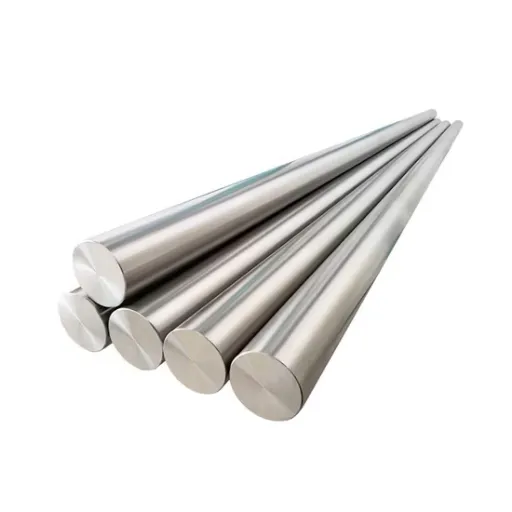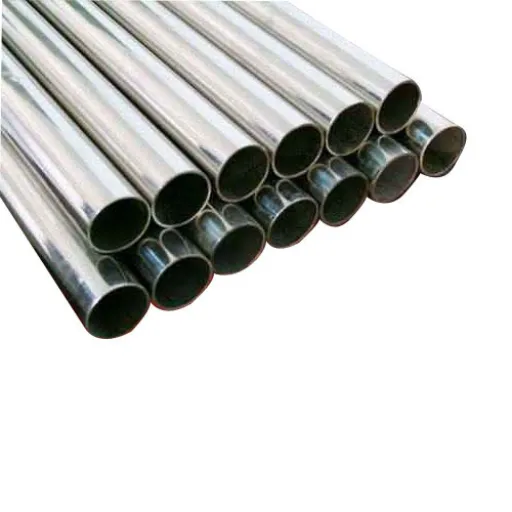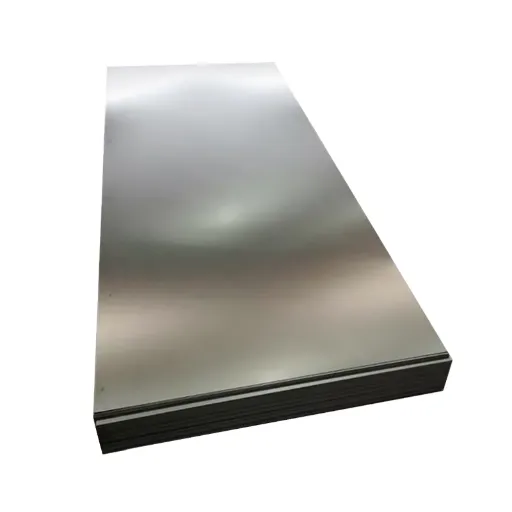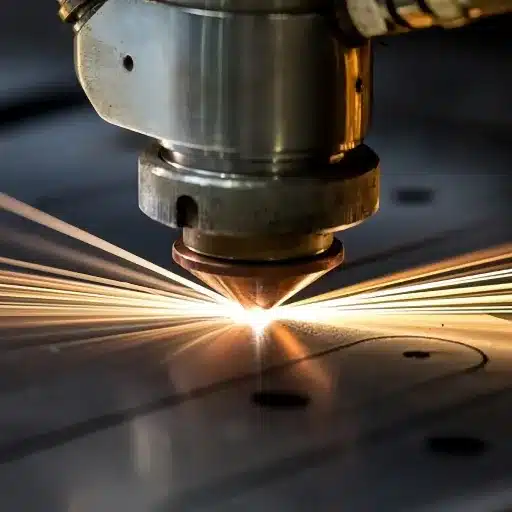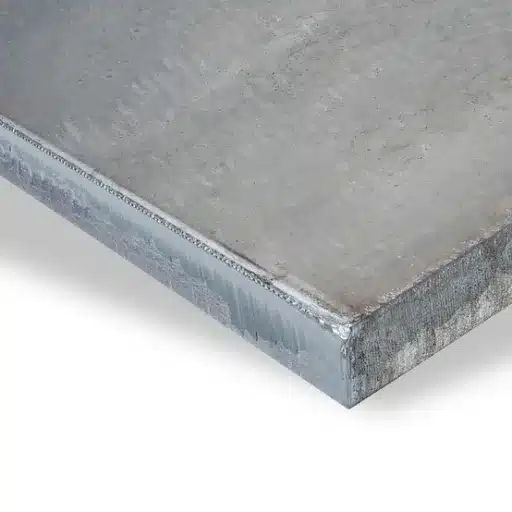Iron-nickel alloys are materials that have special qualities and have thus been very important in the development of material science. The strength, durability, and versatility of alloys make them the most preferred materials among industries from aeronautics to electronics engineering. While the alloys’ indisputable nature in the operation of modern technology is exhibited by their extensive use in many industrial sectors, still the alloys’ distinctive feature is the ability to be made to fit special purposes through the addition of other elements like chromium strategically. This article first features the main characteristics of the iron-nickel alloys, then discusses their general applications and finally examines how chromium can make these alloys even more suitable for industrial needs that are more demanding than ever. The post is of value to engineers, researchers, and even the simply inquisitive about the science surrounding the materials that the world is built upon as it would provide insights into the future potential of these extraordinary alloys.
Understanding Iron-Nickel Alloys

What are Iron-Nickel Alloys?
Iron-nickel alloys are a group of materials characterized by their main constituents, iron (Fe) and nickel (Ni), and their extraordinary resistance to wear, stability to thermal fluctuations, and remarkable combination of characteristics that are usually not present in the same materials. The toughness of the duo is highly attributed to their physical properties namely; imperviousness to corrosion, as well as the capacity of holding firmness even at very extreme temperatures. The exchange of iron and nickel is exemplified in several well-known forms of iron-nickel alloys, namely; Invar, Monel, and Permalloy, with each differing from others in terms of functional requirements.
The property of iron-nickel alloys that is most often highlighted is their thermal expansion— or in some cases, their extreme low level of it. To elaborate, Invar, which is composed of 36% nickel, is extraordinarily characterized with a low thermal expansion coefficient thus making it very suitable for usage in precision engineering areas such as scientific instruments, clocks, and aerospace components. On the other hand, recent studies reveal that if the iron-nickel alloys are processed with controlled amounts of chromium or molybdenum additives, then the resistance against corrosion could be remarkably improved especially in very tough conditions like the marine or the chemical processing industries.
Composition and Variants
Most soft magnetic alloys are made of iron (Fe), cobalt (Co), and nickel (Ni) as their major components, sometimes combined with minute amounts of elements such as silicon (Si), boron (B), or molybdenum (Mo) that are particularly used to upgrade specific properties. More specifically, silicon increases electrical resistivity and, consequently, reduces power losses thus the addition of silicon resolves the problem of high-power applications, meanwhile, cobalt elevates saturation magnetization, and consequently, enhances the performance of cobalt-based alloys even more for high-performance applications.
Silicon steel is one of the remarkable variants, which, as a rule, is supplied to the market with 2-3% by weight of silicon and is widely accepted for transformer cores because of its low hysteresis loss and great efficiency. Another vital category is permalloy, a nickel-iron alloy, which holds about 80% nickel, acknowledged for its high permeability to magnetism and application in precision heavy magnetics with devices such as sensors and communication devices. At the same time, cobalt-based amorphous alloys have become widely recognized due to their excellent magnetic properties and thermal stability which, in turn, have made them ideal candidates for use in industrial motors and renewable energy applications.
Properties of Iron-Nickel Alloys
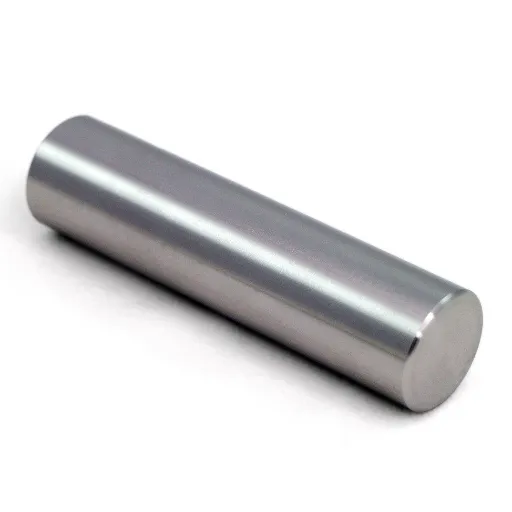
Mechanical Properties of Iron-Nickel Alloys
The exceptional mechanical properties of iron-nickel alloys are well recognized, and due to this, they become the need in a number of industrial applications. Tensile strength, which varies by the composition and heat treatment process, is one of the main features of these materials. The tensile strength can be as high as 1000 MPa or more and at least as low as 600 MPa. In addition, their ductility is so high that the shaping and machining of parts is not a problem. This means that the manufacturers can produce components with very complicated designs that meet the customers’ needs.
Another remarkable property is their high resistance to thermal expansion, plastic especially in alloys, like INVAR 36, where the nickel content is controlled. These very characteristics render them to be used in precision instruments where temperature stability is a must. One more thing is that iron-nickel alloys are also known for their high wear and corrosion resistance, thus giving them a long life even in the harshest of environments, like the aerospace and marine industries.
Corrosion Resistance
Corrosion resistance is one of the most important properties that make iron-nickel alloys useful in difficult situations. They basically do not allow the process of degradation to happen due to the aforementioned reasons. Harsh chemicals, extreme temperatures and long-term atmospheric conditions are the examples of what they resist. If you want to know about it more closely, just have a look at iron-nickel alloys “Invar” and “Monel”. They not only withstand but also retain their properties even with harsh conditions like salt water, acids, or oxidation.
Recently, it has been reported that the addition of chromium or molybdenum to iron-nickel alloys significantly increases their performance against pitting and crevice corrosion. For example, the figures indicate that the corrosion rates for these enhanced alloys in a 3.5% NaCl solution are a mere 0.005 mm/year, as opposed to a much higher rate of 0.1 mm/year for standard stainless steel. Hence, the performance is so good that it opens up the possibilities of their use in places like marine engineering, chemical processing plants, and aerospace applications.
Applications of Iron-Nickel Alloys
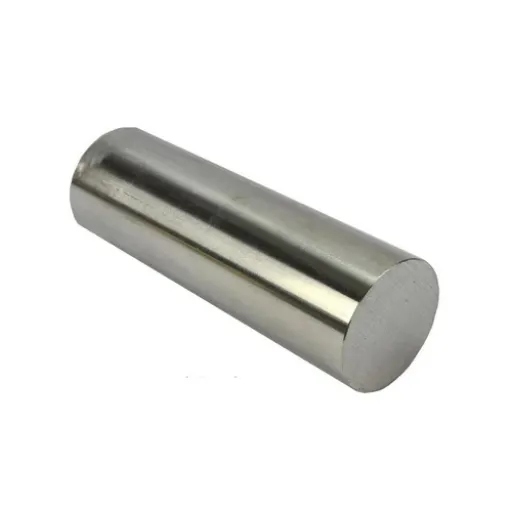
Industrial Uses of Iron-Nickel Alloys
The Iron-Nickel alloys find usage in industries mainly for their mechanical properties, toughness, and flexibility. The most notable application of these alloys is in the aerospace because of the Invar (iron-nickel alloy with 36% nickel) used for thermal expansion control in precision instruments, satellites, and airplanes, etc. The stability of the alloy at different temperatures improves the performance and reliability of these applications, which are very important.
Electronics industry uses iron-nickel alloys like permalloy (with higher nickel content) for their incredible magnetic properties. The use of such alloys extends to energy-efficient devices and materials that absorb or shield magnetic fields as they can save energy and reduce the costs involved.
Aerospace and Defense Applications
Iron-nickel alloys are indispensable materials in aerospace and defense industries because of their outstanding mechanical properties and thermal stability. They are frequently found in the cutting-edge aircraft, spacecraft, and military equipment in which, the ability to deliver performance, in extreme conditions, is indispensable. For instance, their low thermal expansion characteristic makes them suitable for precision parts such as jet engine components where maintaining size and accuracy during temperature changes is critical.
One of the most advantageous applications is the production of components such as missile guidance systems and orbital satellite frames, where durability and resistance to thermal fatigue are musts. Market intelligence reports have confirmed that the demand for such alloys in the aerospace industry has shot up, with the worldwide revenue for superalloys, a class that includes iron-nickel alloys, projected to hit $21.4 billion by 2025. Moreover, the emergence of hypersonic vehicles has contributed to the demand for these materials because of their ability to endure extreme aerodynamic heating.
Chromium Additions in Iron-Nickel Alloys
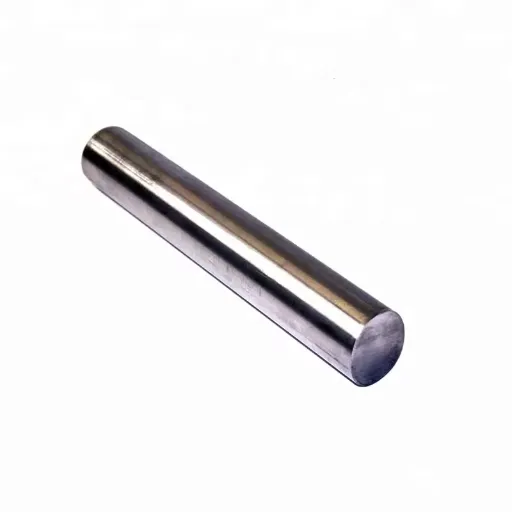
Inclusion of Chromium in Iron-Nickel Alloys
The incorporation of chromium into iron-nickel alloys wipes out their vulnerabilities and varnishes their merits, thus, they can be utilized in a variety of applications across different industries where their alloys are still of good quality and hence used in the equipment and devices.
Chromium is a powerful modifier and not only increases the oxidation resistance of the nickel-iron alloys but also helps in building the strength of the material. This fortification of the alloys makes them suitable for the electronic industries as well as for the consumer markets where their demand is high. Recent studies show that the alloys having 15-25% chromium can, on the one hand, reach the highest point in corrosion resistance while, on the other hand, not losing ductility; thus, they can be used for the production of electronic parts like connectors, shields, and frames. Also, the very high chromium content leads to the formation of the stable passive oxide layer on the alloy’s surface which acts as a barrier to thwart the further breakdown of the material.
Changes in Composite Material Properties
The combination of chromium with iron-nickel alloys elevates the properties of the materials to such an extent that the performance is almost the same as that of the superior materials available in the market. Along with the already mentioned advantages, chromium resistance against oxidation gets increased by a stable layer of chromium oxide that develops on the surface of the alloy during the progress of the reaction between the alloy and oxidizing agents where the alloy is the less corroded part. The recent findings suggest that the alloys that contain between 18% and 22% of chromium not only resist corrosion but also remain intact chemically in contact with sulfates and chlorides thus being able to be used in the marine sector and chemical processing areas.
Moreover, the heat resistance of these alloys gets improved due to the presence of chromium. Studies conducted reveal that the properties of the chromium-bearing composites are still kept at the maximum desired level even at temperatures above 600 degrees Celsius; thus, their utilization in high-temperature areas like jet engines and power plant turbines is permissible. Additionally, the results from a highly reputed metallurgical journal state that the chromium addition has been responsible for the 30% reduction of the creep deformation of the alloy during their prolonged exposure to high-temperature stress.
Advancements in Manufacturing Techniques
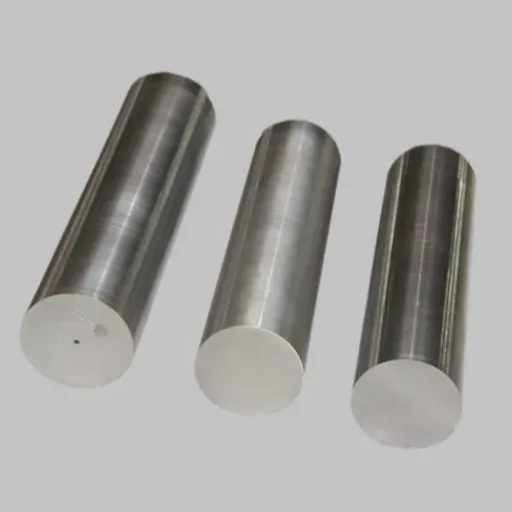
Alloy Production Innovations
Alloy production techniques have undergone continuous change with the help of new materials and manufacturing techniques. Powder metallurgy, for instance, has been a great contributing factor to the uniformity and precision of alloy production. The process in its essence entails compressing metal powders under a combination of heat and pressure so that the resulting parts can exhibit good mechanical properties. It has been claimed through some research that alloys that are made using the powder metallurgy technique can have about 20-30% more resistance to wear than materials produced by the traditional casting method.
Additive manufacturing (AM), better known as 3D printing, is another technology that has made an enormous impact on alloy production. By using AM, the manufacturers can make very intricate designs that were not feasible before, especially in the fields of aeronautics and medicine. For instance, the superalloy GRX-810 from NASA, which is made through 3D printing, has a lifetime that is twice that of traditional high-temperature alloys, and it can bear three times more stress. This is a massive advantage that can be translated into more efficient and durable engines.
3D Printing of Iron-Nickel Alloys
Iron-nickel alloys are a significant new material in the field of additive manufacturing because of their remarkable mechanical and thermal characteristics. Alloys like Invar and Permalloy have been majorly applied in the fields that demand a combination of high-temperature stability and high magnetic permeability. The 3D printing of iron-nickel alloys gives the industry an opportunity to work on more complex designs with fewer materials lost in the process, so this industry in particular has great potential coming from electronics, automotive and aerospace sectors.
Recently, a change in 3D printing technology, involving the methods of powder bed fusion and directed energy deposition, gave a boost to the manufacturability of iron-nickel alloys. For instance, research on iron-nickel alloys made through laser powder bed fusion (LPBF) indicates that they have on par or even better mechanical properties compared to those conventions. It has been reported that samples having a fine grain structure, which was brought about using LPBF, are able to acquire higher yield strength as well as elongation at break. Furthermore, iron-nickel superalloy components that are made through 3D printing can withstand operating temperatures exceeding 600°C without losing any of their qualities, thus being the perfect choice for the most challenging situations.
Reference Sources
-
LinkedIn Pulse – Nickel Iron Target Market Trends Report
This source discusses the primary drivers in the nickel-iron target market, including its applications in renewable energy storage solutions and the growing demand in various industries.
Source Link -
DataIntelo – Global Nickel Iron Target Market Report
This report provides insights into the global market size, growth projections, and key applications of nickel-iron alloys, making it a reliable source for understanding its feasibility and market demand.
Source Link -
Future Market Report – Nickel Iron Target Market Size and Growth
This source offers detailed information on the market size, growth rate, and applications of nickel-iron alloys, highlighting their importance in various industries.
Source Link
Frequently Asked Questions (FAQs)
How the Mechanical Properties of Iron-Nickel Alloys Compared to Steel?
In general, iron-nickel alloys are with standard steel as the major property of their mechanical quality. They have a highly permeable characteristic under and can retain their hardness and raw material properties even through temperatures variation. Apart from that, nickel addition also boosts up their resistance to corrosion enabling them to be exposed to hard environments.
What Are the Corrosion Resistance Properties of Iron-Nickel Alloys?
Iron-nickel alloys resist rusting and show excellent corrosion resistance particularly when they are combined with chromium. This factor contributes to their being the perfect metals in tough conditions like marine or chemical processing industries, where you always have to think of the possibility of the elements getting corroded.
What Are the Different Types of Iron-Nickel Alloys?
Among iron-nickel alloys, you will find a variety of them with some of the very specific ones like those that have low expansion coefficients and high permeability. Each class is made for the particular use that could be either soft magnetic materials or those in high-frequency applications with a variety of the intended magnetic properties.
How Do Iron-Nickel Alloys Exhibit Magnetic Properties?
Iron-nickel alloys come under the category of magnetic materials as these have the capability of being attracted and responding to magnetic fields. They have a rare mixture of soft magnetic traits and can be molded through engineering into different magnetic behaviours which makes them a necessary part of electrical and magnetic field technologies.
What Role Does Titanium Play in Iron-Nickel Alloys?
Titanium can be incorporated into iron-nickel alloys to boost their strength and stability in high-temperature situations. This alloying effect, in turn, is especially useful in severe applications, thus ensuring better performance of the materials and their usability in specialized industrial sectors.

